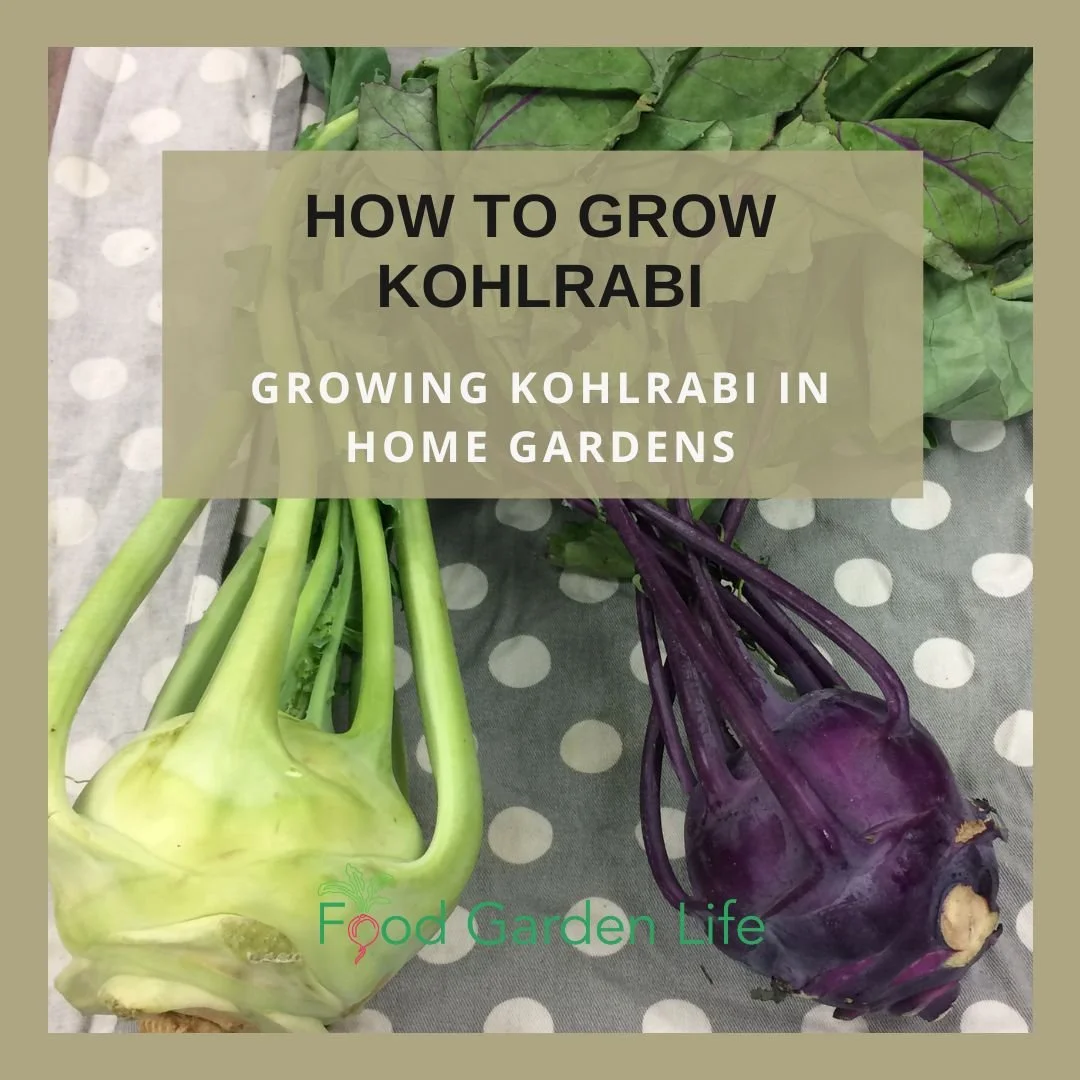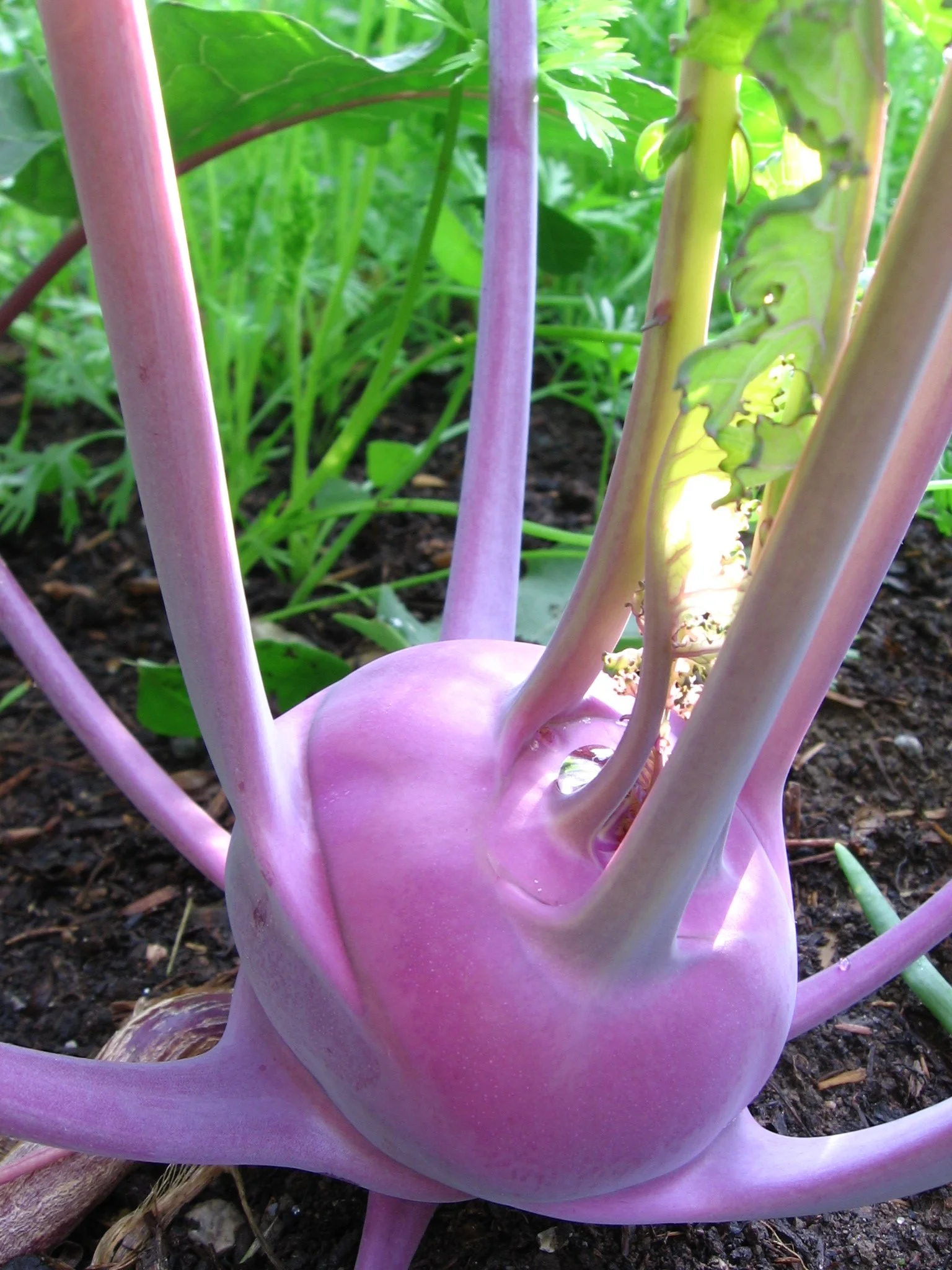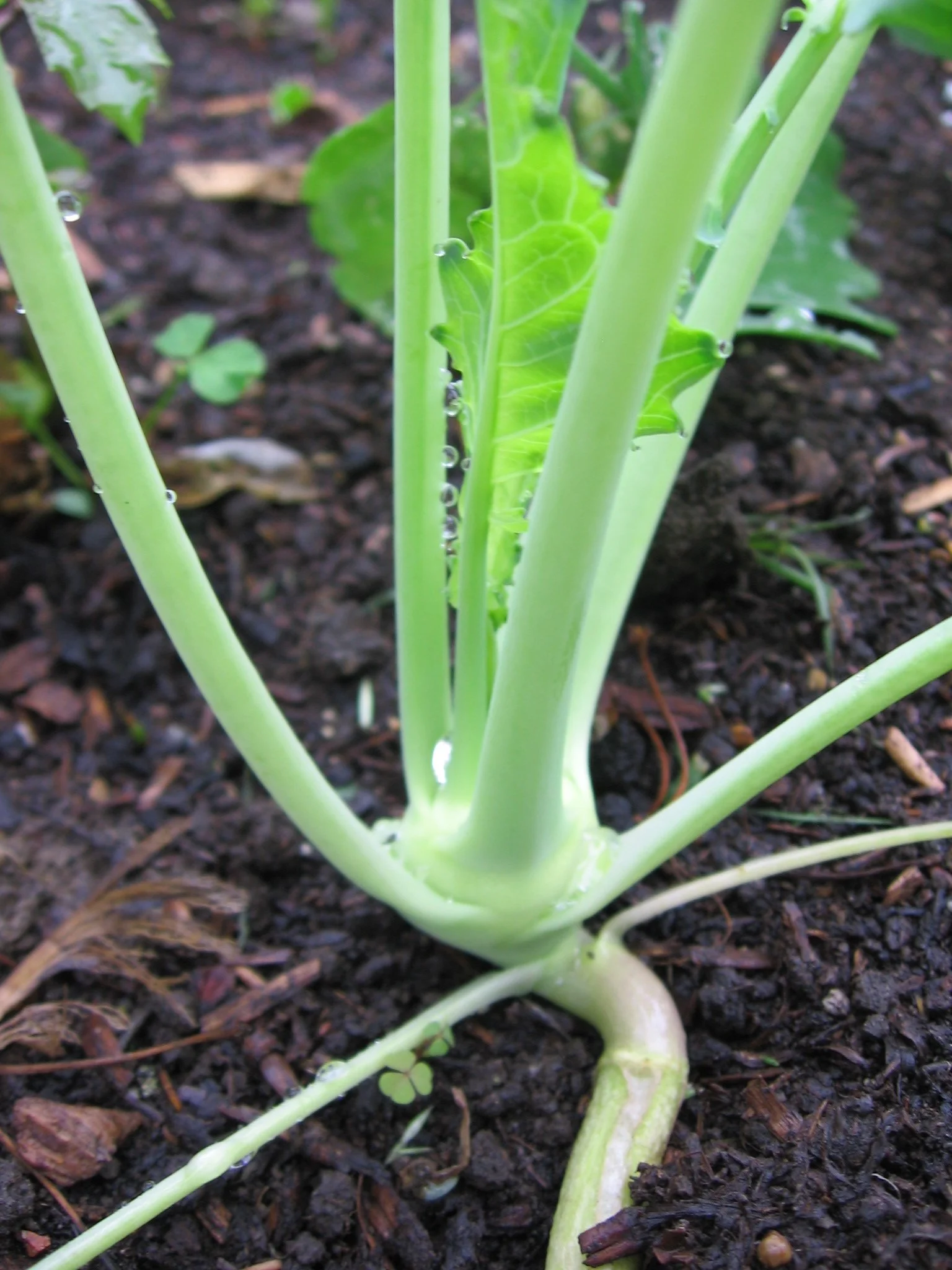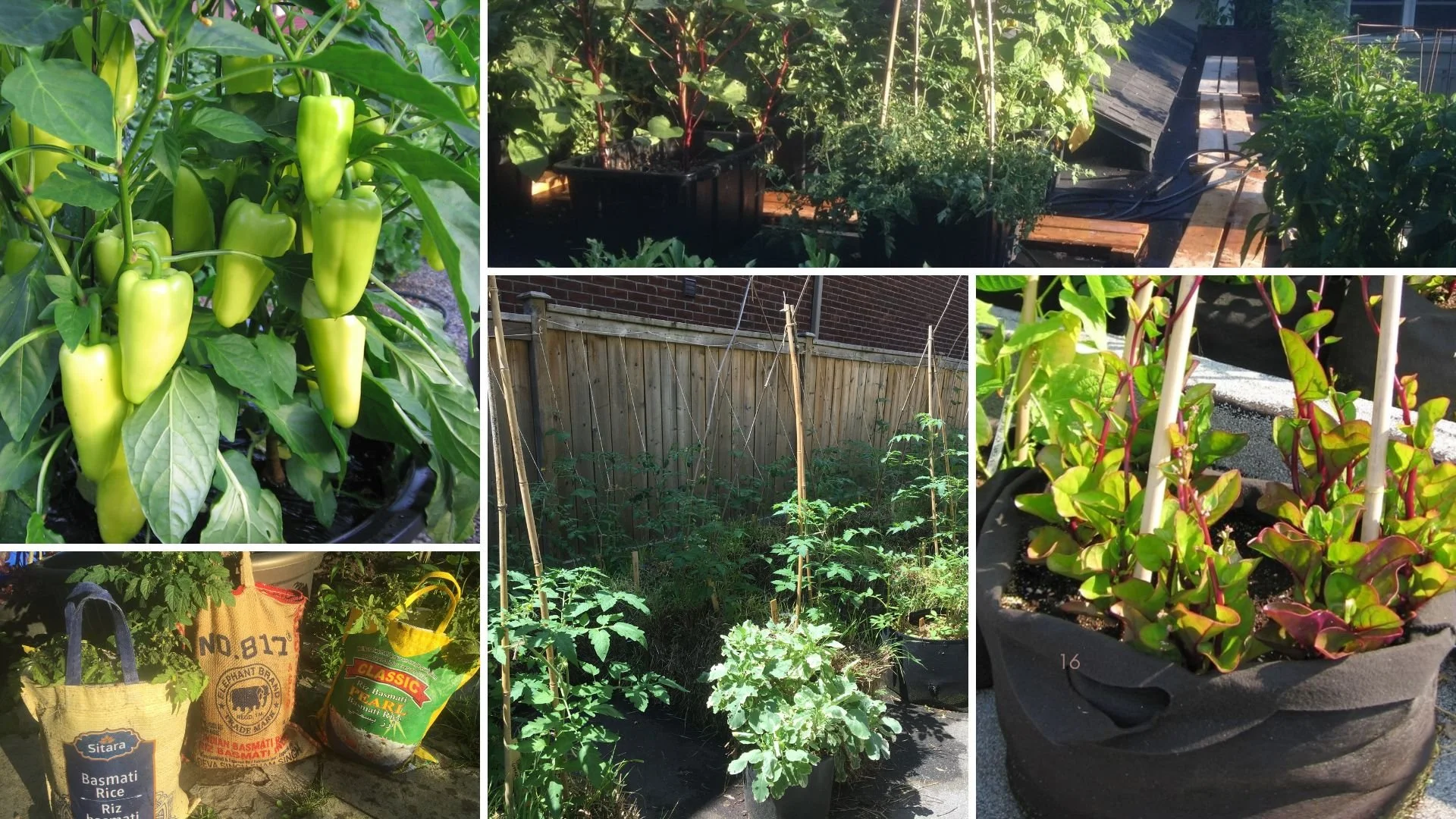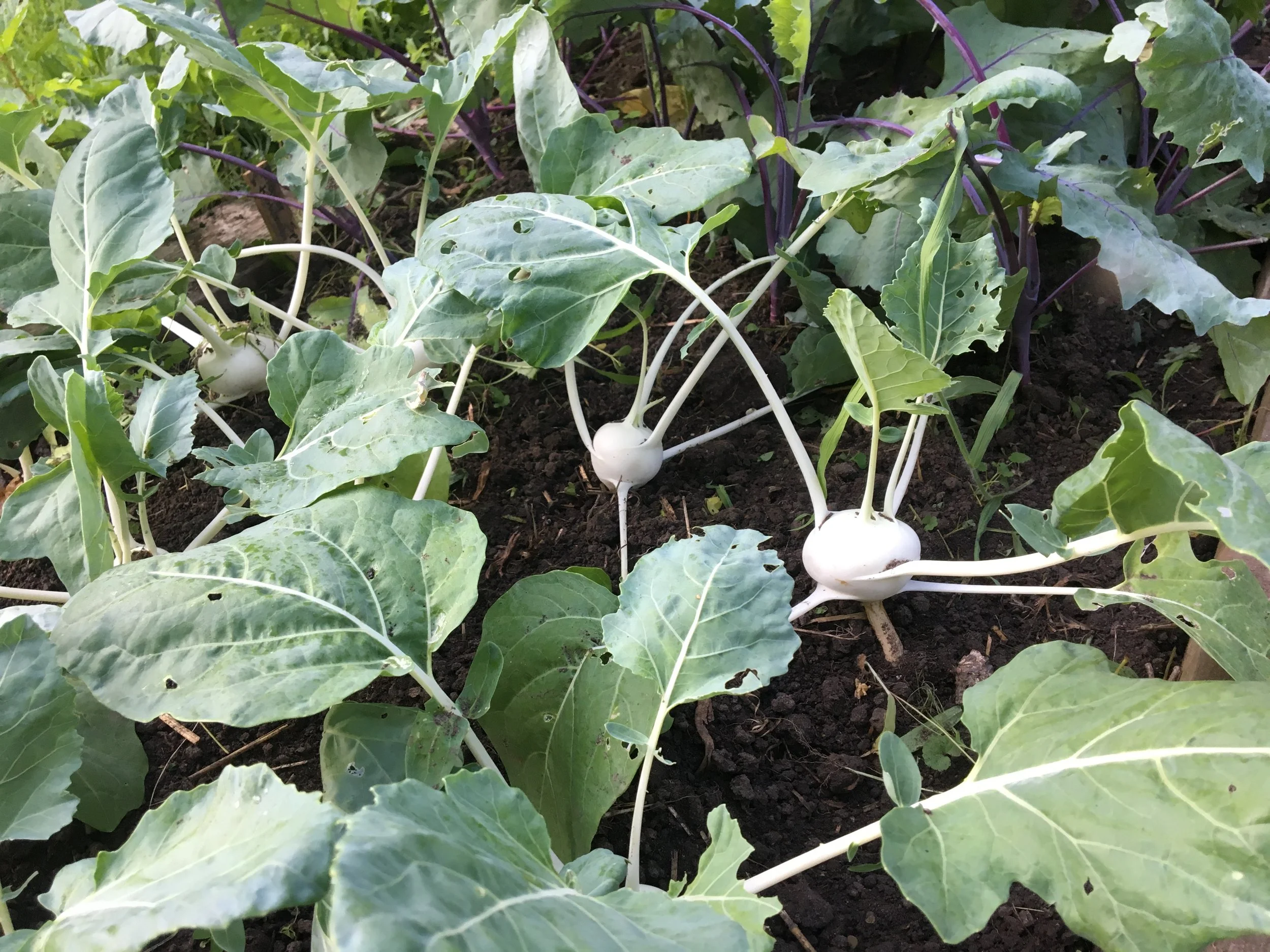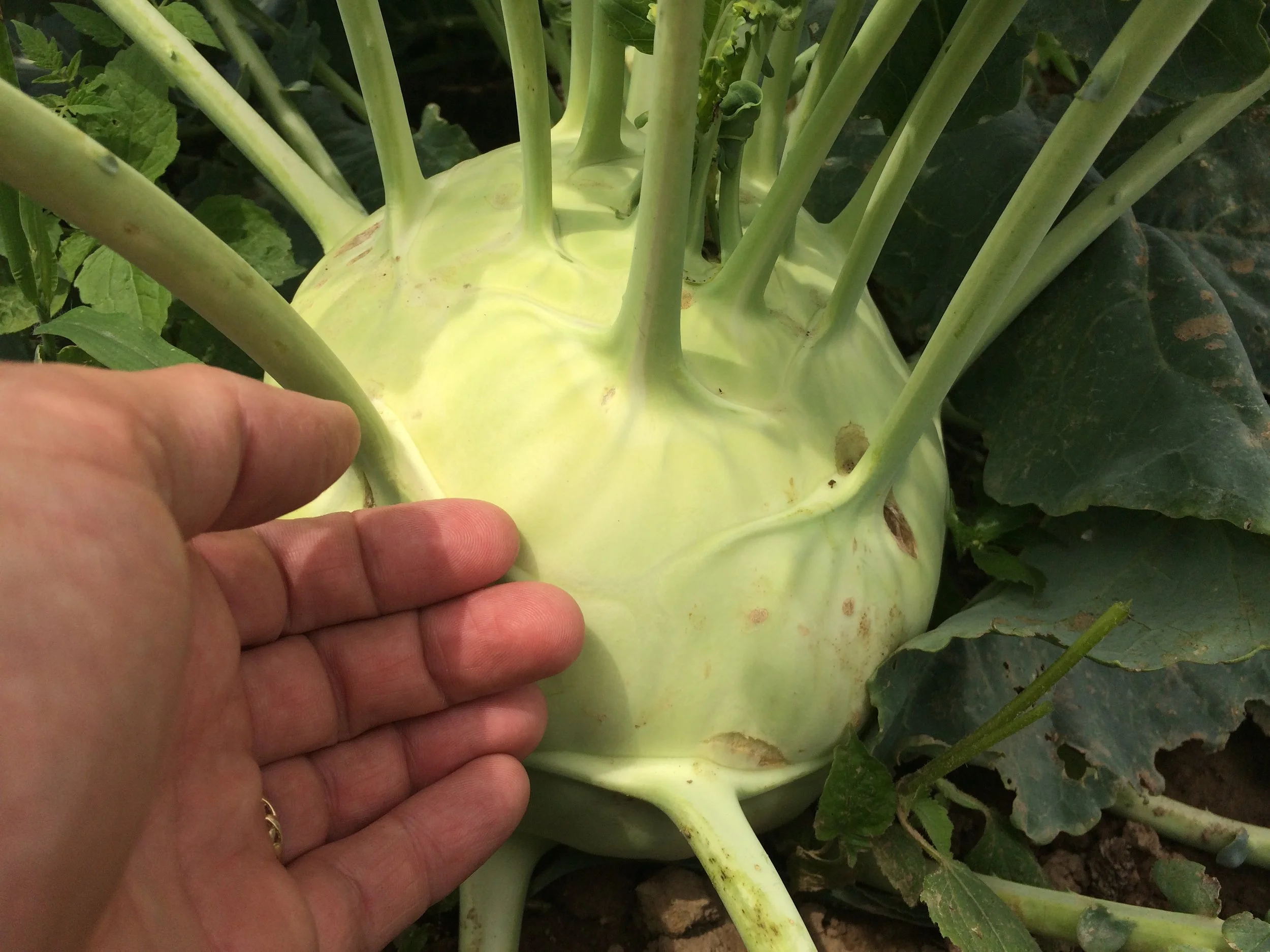How to Grow Kohlrabi
By Steven Biggs
Growing Kohlrabi in Home Gardens
THREE CHEERS for one of the most photogenic veggies out there.
To my kids, kohlrabi looked like flying saucers. When I look at kohlrabi from the right angle I see a person having a bad hair day.
Whatever your imagination paints it as, it’s both attractive and unusual, making it a nice fit for an ornamental edible garden.
It’s also easy to grow, quick to mature, and versatile in the kitchen.
If you haven’t tasted it before, I’d describe the flavour as a cross between a mild apple and mild turnip. Let’s call it turnip light!
In this post I’ll talk about how to grow kohlrabi and how to fit it into your garden.
It Starts as a Rosette
Kohlrabi is a member of the cabbage clan. It has an edible stem that fattens up right above the soil level. Before the stem plumps up, though, the plant is a rosette of leaves. As the stem thickens, the symmetry of that rosette remains, with leaves projecting out from the bulb-like stem.
Top Tip for Kohlrabi Success
Here’s the key to your kohlrabi success: Fast, uninterrupted growth.
To get that type of growth, grow the plant in well-fed soil, with cool temperatures and consistent moisture.
Site
Kohlrabi is an easy-to-grow vegetable that is versatile in the kitchen.
Like its cabbage cousins, kohlrabi grows best in soil with lots of organic matter
A spot with full sun is best (although I’ve had decent results growing kohlrabi in partial shade)
Grow Kohlrabi from Seed
Kohlrabi is easy to grow from seed, indoors or outdoors. I don’t usually bother starting them indoors in the spring, but it’s an option if you want the earliest possible harvest. If you start them indoors, there’s no need for a heat mat.
Sow seeds approximately 5 mm (1/4”) deep
Outdoors: Start sowing about 1 month before the last spring frost
Indoors: Start kohlrabi transplants about 1 month before you plant to move them to the garden
Here are a couple of ways to get a longer kohlrabi harvest:
Start additional seeds every 2-3 weeks
Grow more than one variety, choosing varieties that take different amounts of time to mature
A young kohlrabi plant, before the stem has started to fatten up.
Note: While kohlrabi plants are tolerant of cold weather, a hard freeze can cause young plants to bolt – to jump right to the flowering stage. That would mean no thick edible stem. So there’s a limit to how early you can plant them out.
Kohlrabi as a Summer Succession Crop
When kohlrabi is a succession crop, I like to pre-start seedlings indoors (or outdoors, in another part of the garden). That way, I have transplants ready to go once the desired space opens up.
While I rarely start spring kohlrabi indoors in the spring, I find it’s the best way for me to grow kohlrabi for summer succession because:
It allows me to have a tighter succession...with larger plants ready as soon as the space is open
The hot, dry summer weather that I get here is not ideal for outdoor seeding
Note: Depending on growing conditions in your area – and how much attention you give your garden over the summer – kohlrabi might or might not be a suitable summer succession crop. Dry conditions can cause erratic growth and give a woody texture with a strong, bitter flavour.
Grow a Container Vegetable Garden
And get an early harvest of crops that usually take too long!
Spacing
Thin kohlrabi plants to give a spacing of approximately 10-15 cm (4-6”) apart.
With direct-seeded kohlrabi, I usually plant them more densely than recommended. Then I thin out the row as the stems begin to fatten, enjoying an early harvest of young kohlrabi.
Kohlrabi leaves are edible, so if I thin out any plants before the stems enlarge, I can still add the leaves to a salad!
Planting more densely is also cheap insurance against losses and poor germination.
If you’re aiming to grow larger kohlrabi, increase the spacing a bit – and look for a variety know for size.
Sow the seeds approximately 5 cm (2“) apart
Thin to 10 – 15 cm (4-6”) apart
Space rows 30cm (12”) apart
If you’re aiming to grow larger kohlrabi, increase the spacing a bit – and look for a variety know for size.
Challenges
I find the early crop is not bothered much by pests. But later sowings and summer-succession transplants are growing when there are more pest pressures in the garden. That means young seedlings can be vulnerable to flea beetles, cabbage worm, and cabbage looper. An easy solution is to cover young plants with a floating row cover.
Where possible, rotate crops to minimize pest and disease pressures. That means it’s best not to plant kohlrabi where you’ve had you’ve had related crops (broccoli, cauliflower, collards, kale, turnip, rutabaga, cabbage, bok choy, Brussels sprouts, and mustards) in last 4 years.
Harvest and Storage
Kohlrabi usually take a couple of months to mature. Pick when they’re anywhere between the size of a golf ball and a tennis balls. Remember: smaller will be more tender.
Kohlrabi is frost hardy, so there is no rush to harvest it in the fall.
In the Kitchen
Kohlrabi is versatile in the kitchen.
You can eat kohlrabi raw or cooked. Either way, peel it first, because the skin can be tough. I prefer to use a paring knife (sometimes a potato peeler gets stuck on the spots where the leaf joined the stem.)
Here are some ways I’ve enjoyed serving kohlrabi:
Sliced, on a veggie platter
Grated, in slaws and salads
Poached (in white wine with butter is nice!)
Cut into ribbons, and added to a stir fry
Cubed and added to curries
Remember: The young leaves and leaf stalks are edible too!

